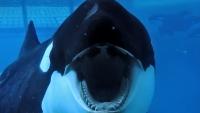 Last October, the documentary Blackfish aired on CNN. The documentary looked at the almost 40 year history of orcas in captivity, leading up to the killing of SeaWorld trainer Dawn Brancheau in 2010 by the 12,000-pound orca, Tilikum, a whale previously associated with the death of two other people. At the time, SeaWorld dismissed the documentary and went on with business as usual.
Last October, the documentary Blackfish aired on CNN. The documentary looked at the almost 40 year history of orcas in captivity, leading up to the killing of SeaWorld trainer Dawn Brancheau in 2010 by the 12,000-pound orca, Tilikum, a whale previously associated with the death of two other people. At the time, SeaWorld dismissed the documentary and went on with business as usual.
On August 13, however, SeaWorld Entertainment’s shares dropped by 35 percent to a record low after the company reported year-to-date losses of 5 percent in revenue and a 4.3 percent slide in attendance, with second-quarter revenue down 1 percent and attendance up 0.3 percent. (The first-quarter figures were worse, an 11 percent revenue plunge driven by 13 percent fewer visitors.) For the first time the company acknowledged the protests following the airing of Blackfish. The company blamed its woes in part on protests against its orca shows and legislation introduced in California that would ban using killer whales for entertainment in that state.
Two days later, the company announced the Blue World Project, a proposal to roughly double the size of the orca tanks at its San Diego theme park. Similar tanks would then be built in Florida and Texas parks. SeaWorld also promised to commit $10 million to support research sponsored by the National Oceanic and Atmospheric Administration on threats to killer whales, and to create programs to protect ocean health. Critics are questioning whether larger tanks and charitable giving are enough to counter the rising criticism of the theme parks and the practice of keeping orcas in captivity.
Blackfish director Gabriela Cowperthwaite commented, “I do appreciate the fact that SeaWorld is willing to admit that something is wrong, for the first time,” she told Bloomberg Friday. “But the problem is, instead of changing their business model, they’re doubling down.”
Thanks to Alaric Bond for contributing to this post.
